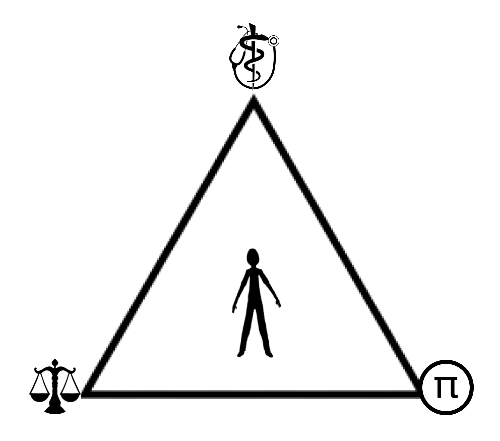The United States legal system, especially when handling capital punishment cases, faces a critical challenge: how to reduce uncertainty and ensure that justice is truly served. Claude Shannon, through his groundbreaking work in information theory, showed us how to reduce informational entropy and increase the accuracy of transmitted messages. Max Planck, through quantum mechanics, demonstrated how to reduce uncertainty in the physical world. These principles of reducing chaos and increasing precision should be applied to the justice system, particularly in cases where lives are at stake.
This week, the Supreme Court allowed Missouri to execute Marcellus Williams, convicted in 2001 for the murder of Felicia Gayle. Williams’ case, contested by the very prosecutors who originally convicted him, sheds new light on the court’s approach to the death penalty. The Supreme Court’s decision, over the objections of three Supreme Court justices, allowed Missouri to execute Williams, despite significant concerns about his conviction, which has exposed a growing crisis in how capital cases are handled, underscores the dangers of legal entropy, uncertainty, errors, and biases that can lead to irreversible outcomes.
Over the past two years, the Supreme Court has only intervened in two out of more than two dozen emergency death penalty appeals, suggesting that the court may be increasing the entropy in the justice system by refusing to address fundamental errors. Justice Sonia Sotomayor has been vocal in her opposition to the court’s approach to capital punishment. In past dissents, she has argued that the court’s reluctance to address new evidence or claims of innocence erodes public trust in the judicial system. This reluctance is particularly troubling in the face of scientific evidence that could potentially exonerate individuals like Marcellus Williams. Despite the introduction of DNA testing and other advanced forensic techniques, many states and even the federal courts fail to incorporate these tools into their proceedings, adding to the chaos and uncertainty.
In 1948, Claude Shannon revolutionized communication systems by introducing the concept of entropy which is the measure of unpredictability or disorder in a system. He showed that when noise interferes with a message being transmitted, redundancy and error correction can ensure that the intended message is still received with high accuracy. This same principle applies to the U.S. legal system where a verdict of guilt or innocence is the message, and the “noise” comes in the form of prosecutorial misconduct, unreliable evidence, and systemic biases.
Marcellus Williams’ case is riddled with such noise. Among the concerns raised was that the murder weapon had been handled without gloves, potentially contaminating the evidence. Prosecutors involved in Williams’ trial later acknowledged these errors, arguing that further DNA testing could have exonerated him. However, the Missouri Attorney General dismissed these concerns, claiming the evidence was still consistent with guilt. In such a high-stakes case, the legal system’s failure to employ error correction mechanisms is catastrophic.
As Shannon suggested adding redundancy to correct errors in communication, the U.S. justice system must integrate multiple layers of independent review. Death row cases should not hinge on one flawed trial or a single appeal. As with Williams, there should be mandatory reviews by independent bodies to prevent wrongful executions. These checks, like Shannon’s error-correcting codes, would help reduce noise in the judicial process.
The case also highlights the need for error detection programs in capital punishment cases, much like Shannon’s error-detecting codes. Issues like mishandled evidence, unreliable testimony, or prosecutorial misconduct should trigger automatic reviews, rather than leaving it to chance. This ensures that noise in the judicial system is identified and corrected before it leads to irreversible consequences, such as the execution of an innocent person.
Much like the uncertainty in quantum physics, legal cases especially capital cases are fraught with ambiguity and human error. The case of Marcellus Williams, where key evidence was potentially mishandled, shows how uncertainty can lead to tragic outcomes. Just as Planck introduced precision into physics, the legal system must adopt methods to reduce uncertainty and increase accuracy in capital cases. Like Planck’s precision in physics, the legal system needs to adopt rigorous scientific methods for evaluating evidence. Williams’ case shows how forensic evidence can be mishandled, leading to erroneous conclusions. The legal system must in capital cases reduce the uncertainty that leads to wrongful convictions.
Max Planck’s work in quantum mechanics introduced the idea of discrete energy levels, allowing physicists to make far more accurate predictions in a previously chaotic field. Before Planck, the unpredictability of black-body radiation presented scientists with insurmountable uncertainty. His quantum theory brought order to that chaos by quantizing energy, making it possible to predict the behavior of atoms with unprecedented accuracy. Planck’s quantized theory allowed for more reliable predictions by breaking down complex systems into manageable components. Similarly, the U.S. legal system should assess the risk of wrongful convictions. In Williams’ case, prosecutors raised concerns about how the evidence was handled, but the state dismissed these issues. If the legal system operated with an understanding of the probabilities involved in human error and evidence mishandling, it could introduce stricter safeguards to prevent wrongful executions.
The case of Richard Glossip, set for review by the Supreme Court in the coming months, mirrors Williams’ in many ways. Glossip, like Williams, has raised significant concerns about prosecutorial misconduct and errors in evidence handling. Yet, despite these concerns, the court has remained hesitant to intervene. The failure to reduce entropy in these cases could lead to a miscarriage of justice, not only for Glossip but for countless others facing the ultimate penalty.
Shannon and Planck showed that reducing entropy—whether in communication or quantum physics—leads to increased accuracy and greater reliability. The justice system must take a similar approach to capital punishment cases, where the consequences of error are irreversible. By incorporating scientific evidence, error correction mechanisms, and rigorous independent reviews, the legal system can drastically reduce the likelihood of wrongful convictions and executions. The Supreme Court’s decision in Marcellus Williams’ case has reignited the debate over the death penalty, with critics pointing to the court’s reluctance to correct systemic errors. In a fair and just society, as Georgetown Law professor Cliff Sloan argues, a freestanding claim of innocence must be treated as a constitutional right. Yet, as cases like Williams’ and Glossip’s show, this is not the current reality.
The justice system, like any information or physical system, is prone to entropy—a state of disorder and uncertainty. In the legal realm, this entropy manifests in wrongful convictions, erroneous outcomes, and, most gravely, the execution of innocent prisoners. In much the same way that Claude Shannon revolutionized communication systems by reducing informational entropy, and Max Planck clarified physical systems through quantum theory, the legal system can adopt similar methods to improve accuracy and reduce life-altering errors. Though Shannon and Planck worked in different domains, both dealt with entropy as a measure of disorder or uncertainty. Shannon applied it to communication and information, while Planck applied it to physical systems. Shannon sought to minimize entropy to increase the accuracy of data transmission, while Planck’s work with quantum mechanics provided a more accurate description of physical systems by understanding energy distribution in terms of probability and discrete states, effectively managing entropy in thermodynamic processes. The death penalty is the ultimate exercise of state power, and with it comes the highest moral responsibility. As long as the legal system continues to tolerate noise, uncertainty, and entropy, it will fail to serve true justice. Innocent lives are at stake, and the lessons of Shannon and Planck remind us that precision, accuracy, and order are not just scientific ideals, they are the cornerstones of a just and fair society.
The Author received an honorable discharge from the U.S. Navy where he utilized regional anesthesia and pain management to treat soldiers injured in combat at Walter Reed Hospital. The Author is passionate about medical research and biotechnological innovation in the fields of 3D printing, tissue engineering and regenerative medicine.


This article could serve as the PERFECT preamble to the filing of my appeal, which seeks to do the same, to reduce the noise and to introduce rigorous scientific inquiry back into the treatment protocols in pain care, so as to avoid subjecting innocent patients to certain death by denying them life-saving opioid medications based on an agenda that has no scientific basis in reality. If I can get permission from the author to use it for that purpose.